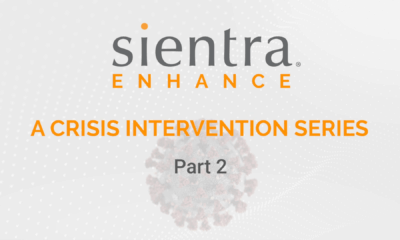
Amplified by the growth of social and digital media, the concern of heavy metal toxicity has re-surfaced again over the past 2 years. In particular, breast implant patients (including breast augmentation, breast revision and breast reconstruction) are routinely coming into their plastic surgeons office worried that their implants contain heavy metals that may be adversely affecting their health. While breast implants do not contain harmful levels of heavy metals based on all science, the subject is complex and the information can be confusing when taken out of context.
On the latest PSC Deep Dive, board certified plastic surgeon Dr. William P. Adams Jr. of Dallas, TX sat down with Dr. Roger Wixtrom, one of the world’s leading board certified toxicologists (who has spent over half of his 30 year career focused on the safety and clinical performance of breast implants) for a discussion regarding heavy metals and implants.
Why the Uptick in Concern about Heavy Metals & Breast Implants?
Why is this topic resurfacing today? The reason is incomplete information on many internet and social sites, namely those devoted to breast implant illness. Many have a tab marked “heavy metals.” When Dr. Wixtrom clicked on this tab, it brought up a long list of heavy metals in current FDA approved breast implants. If he was not someone who worked with the FDA and knew the background, and he looked at this list, he “would think that it was a recipe for breast implants,” he shares.
That is not what this list represents because it’s only half the story. The actual FDA document also shows the concentration levels of each of these various heavy metals showing that they are at safe levels.
If Heavy Metals are Safe, Why List Them?
Heavy metals are a part of our everyday life. They exist in our air, water, and food, to some degree. Since they are so abundant, “the FDA requires that manufacturers test their products to make sure that the levels of heavy metals, which can be in raw materials too, are below limits that are well recognized to be safe,” explains Dr. Wixtrom. Furthermore, these limits are standards set by an international group of agencies called the International Conference of Harmonization (ICH), which is a cooperative that includes the FDA as well as similar agencies in Canada, Japan and Europe.
Though it may look scary to see mercury associated with your breast implant, it is critical to keep in mind that the mercury level in a single can of albacore tuna is 90 times higher! The issue isn’t whether or not metals are present in your body, but how much.
Lifestyle Choices Affect Heavy Metals Levels
Dr. Adams recently saw a breast augmentation patient who had tested positive for a heavy metal and wanted to know if her breast implants could be the source. What is the best way to handle this kind of question?
It’s not a surprise to Dr. Wixtrom for a test to come back positive for heavy metals. The CDC is currently running a study that has found low levels of heavy metals throughout our country’s I. As discussed, heavy metals are everywhere. They can also be affected by our lifestyle choices, such as:
- cosmetics use
- safety of drinking water
- smoking
- vaping
- tattoos
- food choices
People who eat a gluten free diet, for example, typically have higher levels of heavy metals (particularly arsenic) because they eat more rice. It is, therefore, not necessarily a concern to test positive for heavy metals. It all comes down to what toxicologist call dose response.
Why Dose Response is Critical
The fundamental principle of toxicology is dose response. “Any substance at sufficiently low does will be safe and, conversely, any substance at sufficiently high doses will exhibit toxicity, even water,” explains Dr. Wixtrom. The issue isn’t whether you’ve been exposed to a chemical, but where does it lie along this dose continuum.
The International Conference for Harmonization “came up with a guideline, specifically for metal impurities in pharmaceutical products, and they established what is termed permissible daily exposures,” Wixtrom continues. These exposures are broken down based on mode of exposure (e.g. ingestion, injection or implantation). From this study, one can assess safe levels for something such as a breast implant. It’s also important to keep in mind that if a substance exists in a device that is implanted and lives in a “sequestered” environment – walled off by the body’s own barrier, the breast implant capsule – it is not going to dissipate in one day. It can be in there for decades.
It’s important for people to understand that the heavy metals in breast implants are not “ingredients” to make the implant but rather trace elements contained in all substances that humans consume and are exposed to everyday. These trace elements are all at safe level as determined by FDA/ EPA and other regulatory bodies. Context for this discussion is critical to put it in proper perspective.
Are Heavy Metals Levels in Breast Implants Safe?
Any manufacturer who is seeking FDA approval for their breast implants must submit their heavy metals levels, and they must be below acceptable levels in order to gain approval. While there are trace amounts of certain heavy metals, they are not ingredients used in the manufacturing of breast implants, except for platinum.
What is also critical for the patients, social media groups, and doctors is to have context for this discussion. For example:
- The amount of Barium in a breast implant is 20x less than the amount of Barium in the NYC water supply.
- The amount of Mercury in a breast implant is 50x less than a can of tuna.
- The amount of Chromium in breast implant is 1,000,000x less than a tatoo.
Platinum is an actual ingredient in breast implants as it is used as a catalyst in manufacturing to accelerate reaction. There are trace amounts present in silicone breast implants, but the platinum used is in its most biocompatible form versus what’s used in certain chemotherapy drugs, for example. This has been proved in multiple studies. Dr. Wixtrom is currently working on a paper on heavy metals and breast implants to be published in one of the plastic surgery publications as well as a prospective funded study from ASERF that includes control groups to analyze heavy metals levels. So, stay tuned.
















Jess
November 19, 2022 at 12:19 pm
Your comment is awaiting moderation.
LOL this is in the body –bypasses the microbiome and gut barrier and hyodroholric acid—-like vaccines or injections. TOTALLY DIFFERENT.
It is difficult for a man to see the truth when his paycheck depends on him not seeing it!!!!!
I am a MD and I have seen so much BII. This is shameful.
Violet Clary
July 17, 2022 at 2:46 pm
Your comment is awaiting moderation.
I love the part about NY city water well I live in North Carolina.
Ann Holmes
September 1, 2020 at 6:25 pm
My heavy metals are off the charts. I will be explanting and then repeating the heavy metals test. If the numbers come in low, that will tell me all I need to know.